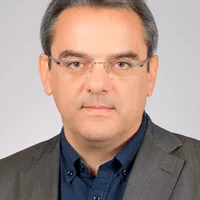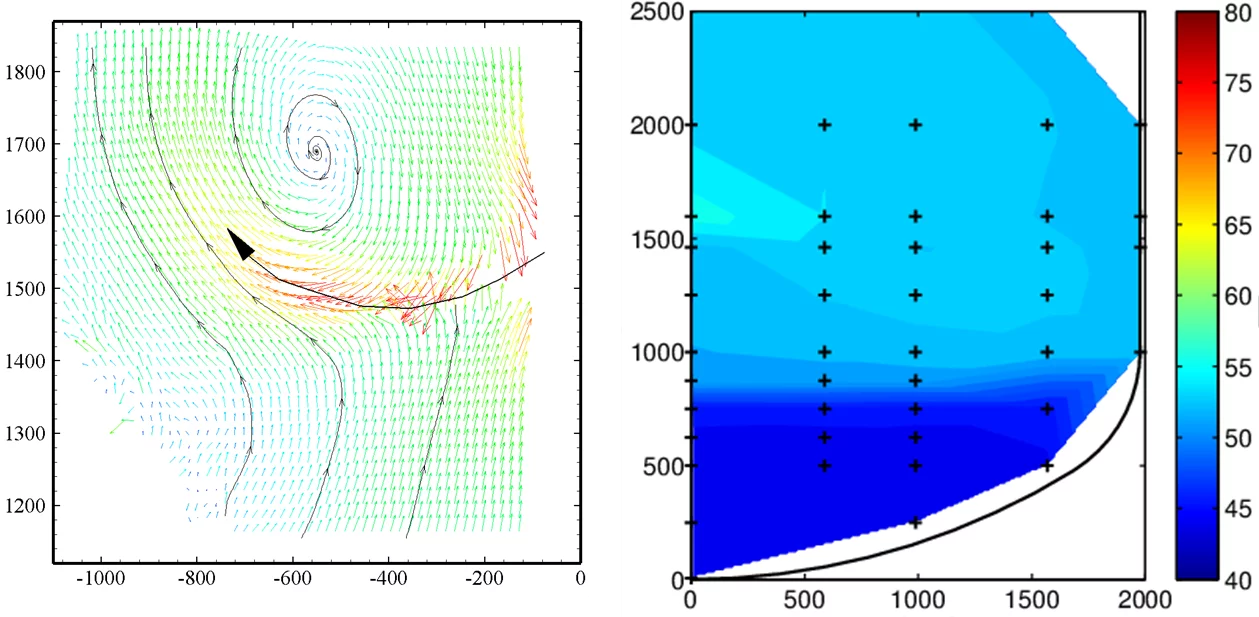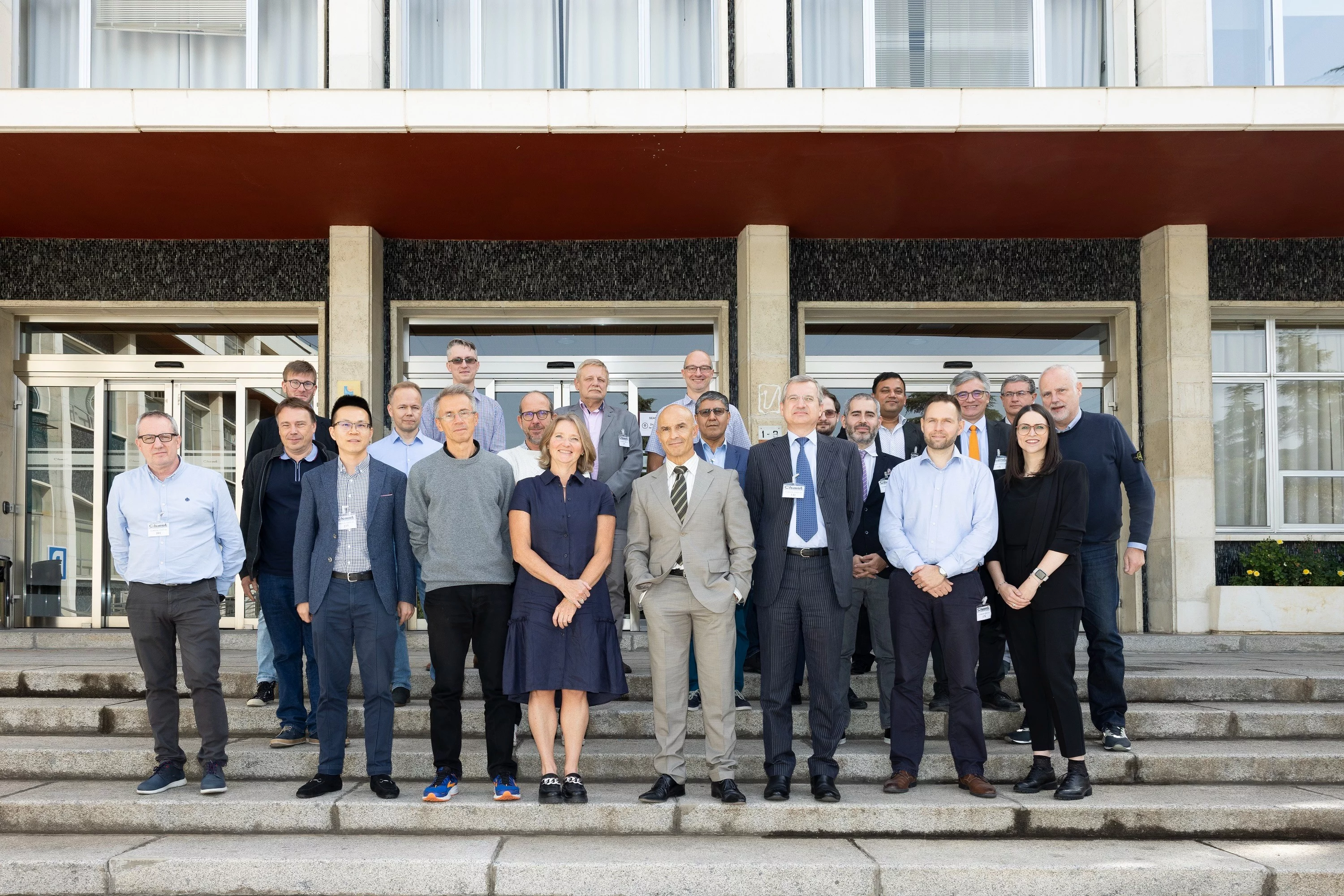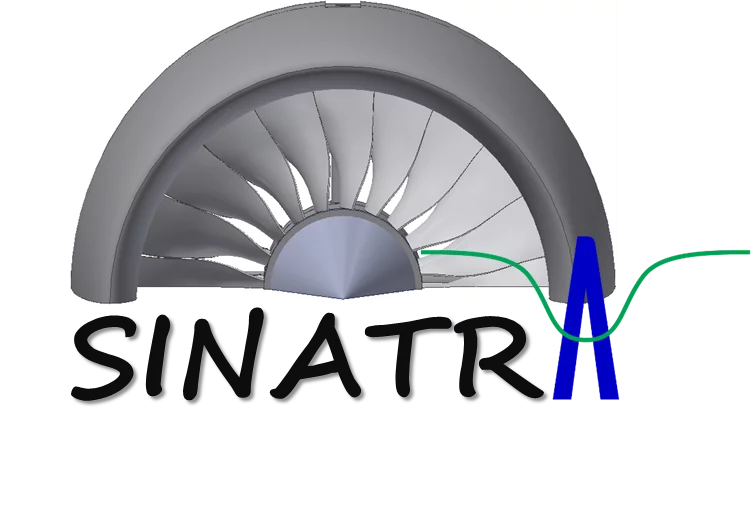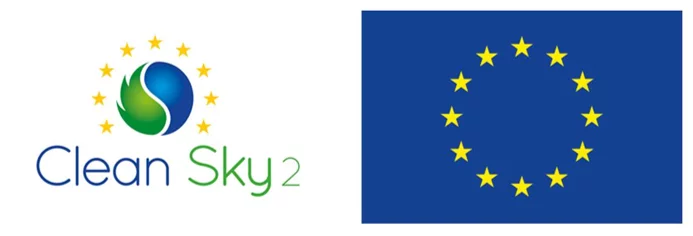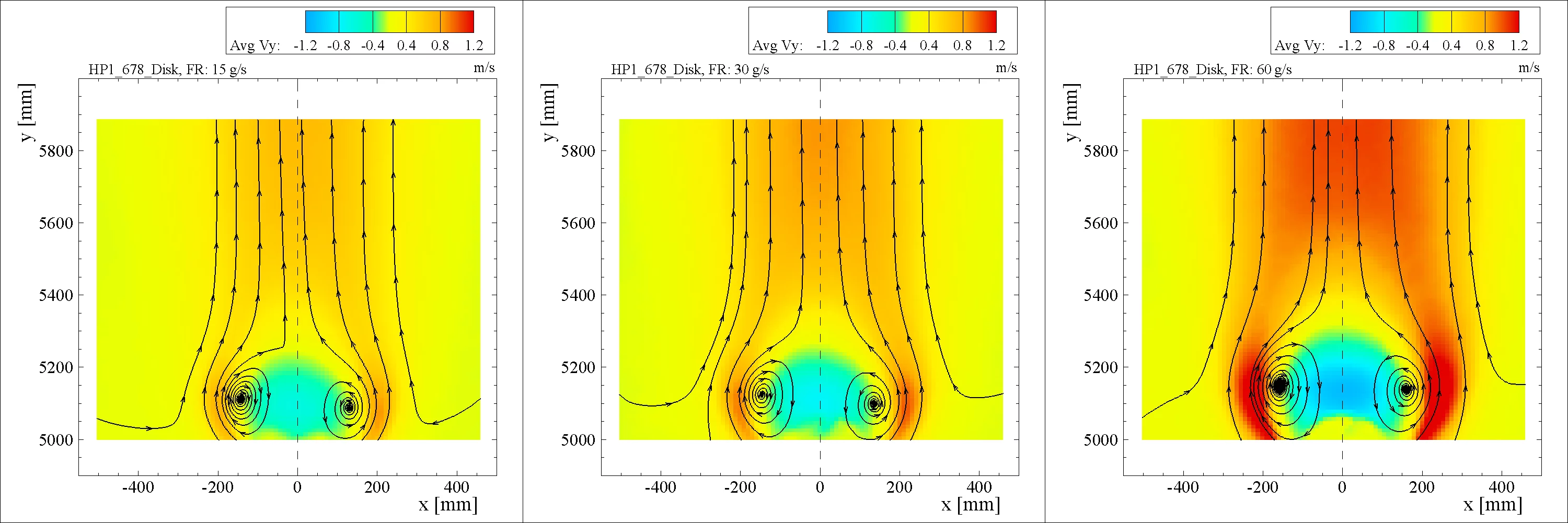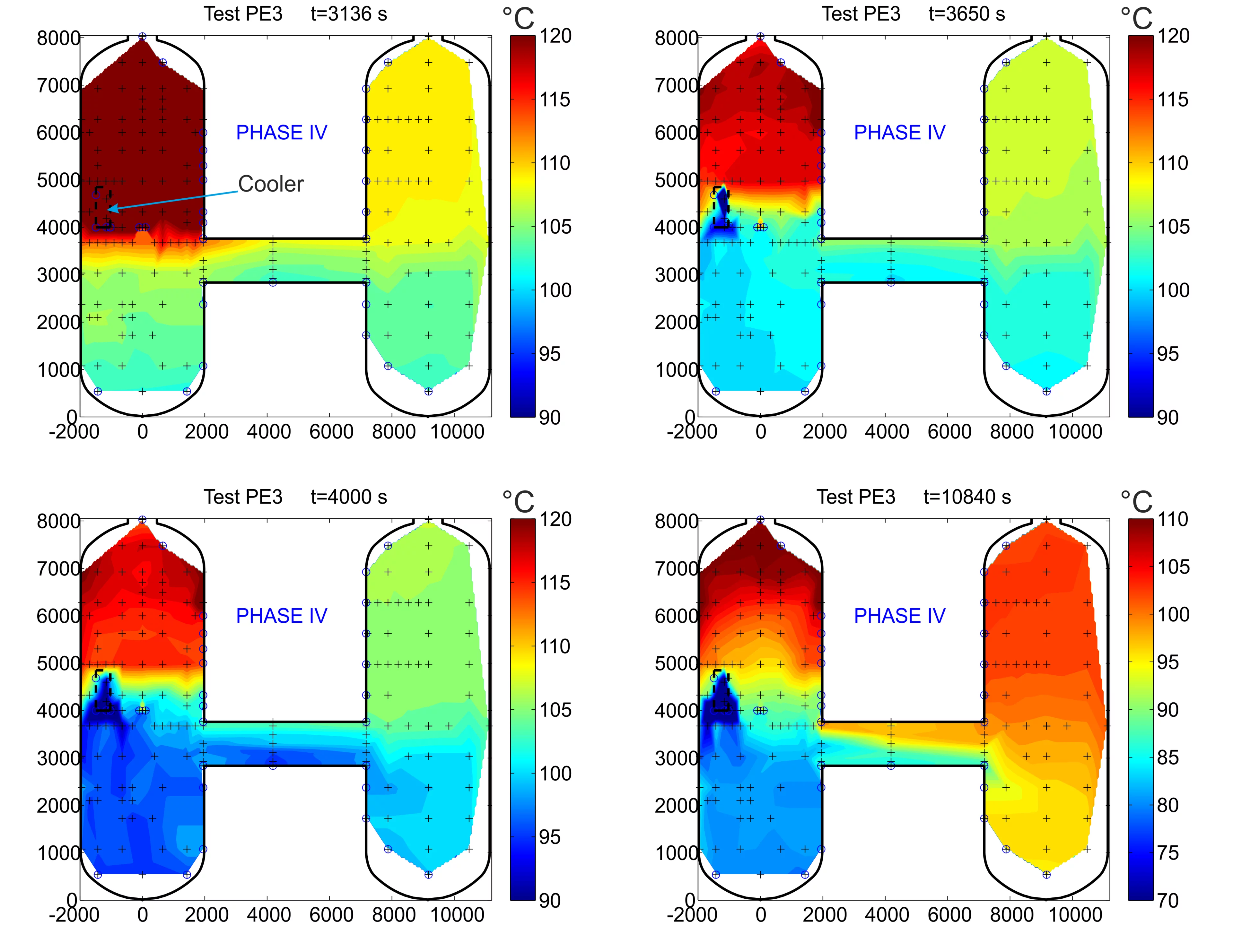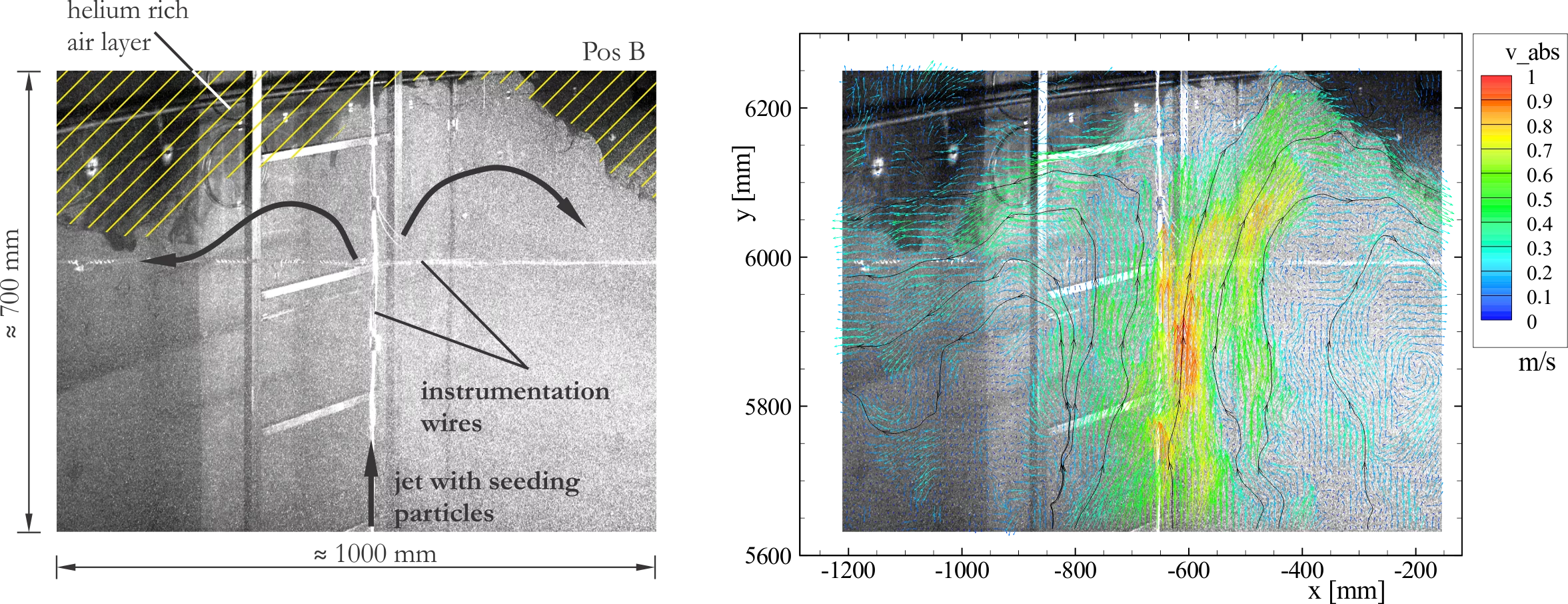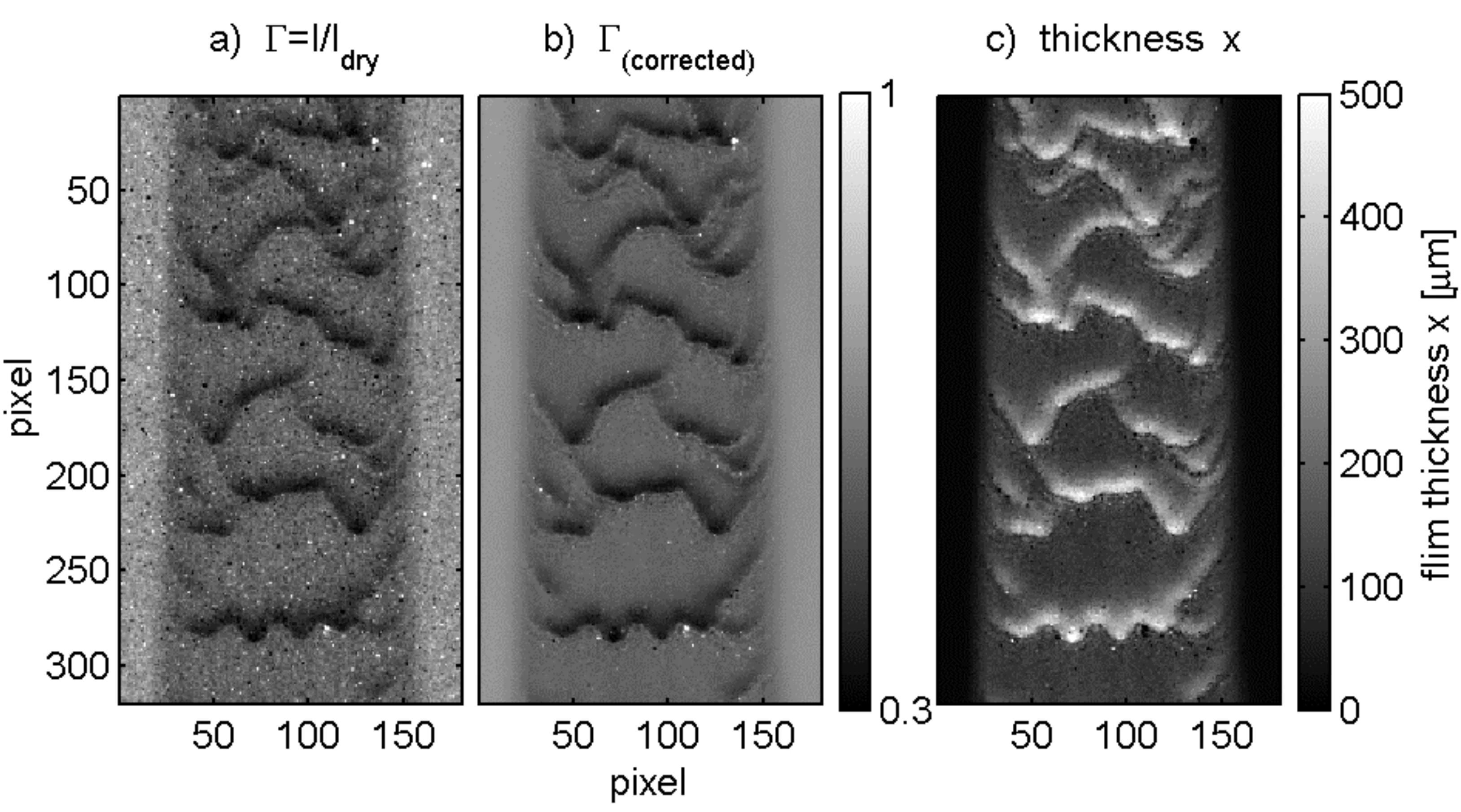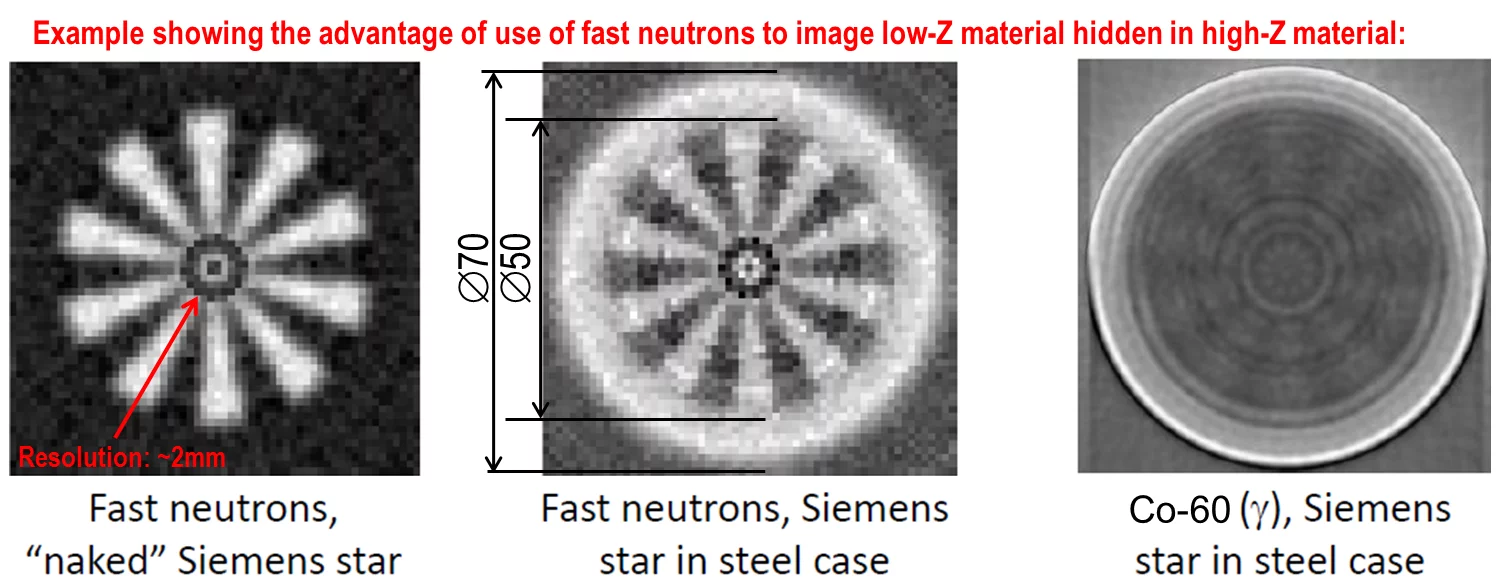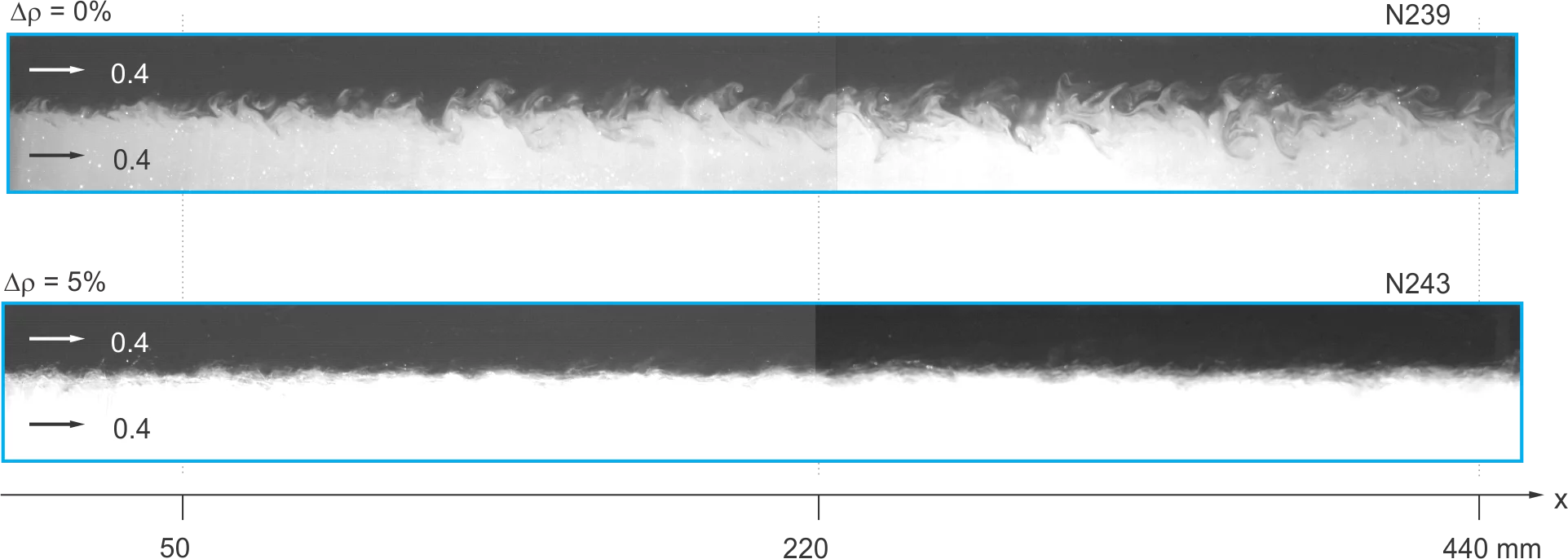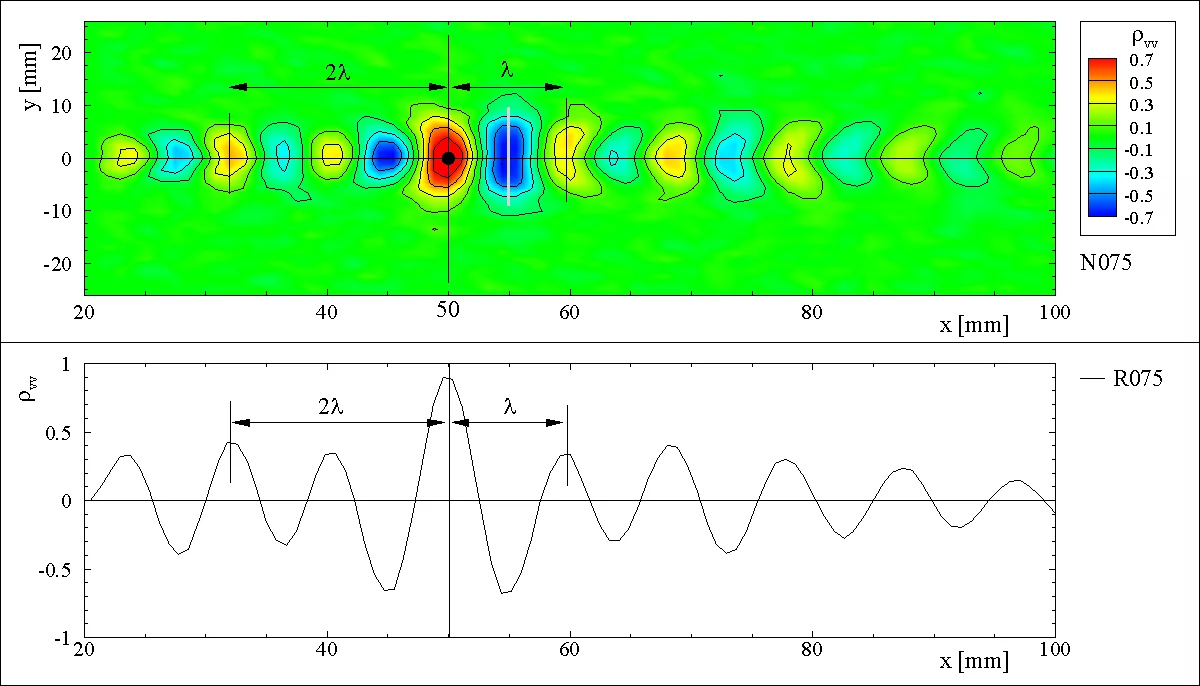Upcoming Projects
We are currently working on various possible future projects.
Ongoing Projects
EURATOM SASPAM
From October 1st, 2022, the SACRE group of PSI LRT participates as an associated partner in the 4 year EU Project "SASPAM" (Safety Analysis of SMR with PAssive Mitigation strategies – Severe Accident), funded by EURATOM.
The key objective of the SASPAM-SA is to investigate the applicability and transfer of the operating large-LWR reactor knowledge and know-how to the near-term deployment of integral PWR in the view of the European licensing analyses needs for Severe Accidents and Emergency Planning Zone.
The expected key outcome of SASPAM-SA is to support the integrated PWR licensing process by bringing up the needed key elements of the safety demonstration, and to speed up the licensing and siting process of integrated PWRs in Europe. In addition, the project includes dedicated actions on Accident Tolerant Fuels and In-Vessel Melt Retention.
EURATOM ASSAS
From November 1st, 2022, the SACRE group of PSI LRT participates as an associated partner in the 4 year EU Project "ASSAS" (Artificial intelligence for the Simulation of Severe AccidentS), funded by EURATOM.
The ASSAS project aims at developing a proof-of-concept severe accident simulator based on ASTEC (Accident Source Term Evaluation Code). The prototype basic-principle simulator will model a simplified generic Western-type pressurized light water reactor. It will have a graphical user interface to control the simulation and visualize the results. It will run in real-time and even much faster for some phases of the accident. The prototype will be able to show the main phenomena occurring during a SA, including in-vessel and ex-vessel phases.
EURATOM SEAKNOT
From October 1st, 2022, the TEG and SACRE groups of PSI LRT participates together as an associated partner in the 4 year EU Project "SEAKNOT" (Severe Accident Research and Knowledge Management for LWRS), funded by EURATOM.
The main aims of the SEAKNOT project are the assessment of the current state-of-the-art in severe accident research, management and exploitation of this knowledge, as well as transfer of this knowledge to young researchers. The Kick-off meeting of the project was organized in CIEMAT, Madrid, on October, 3-5, 2022
OECD/NEA HYMERES phase 2
The project OECD/NEA HYMERES phase 2 is carried out with the main objective to continue improving the understanding of the containment phenomenology during postulated severe accidents and to extend the experimental database to phenomenology not investigated previously. The experiments are carried out at PSI in the PANDA facility.
The Project investigations will address the four main topics listed below:
-Topic 1: extend the database on flow impacting obstructions and containment internal structures. It is proposed to extend the experimental database, on jet flow impacting flow obstructions by considering flow geometries resembling those of nuclear containment internal structures. The primary target of the new programme will be to provide data for testing the codes against a variety of flow obstruction geometries up to scaled-down real containment internal structures.
-Topic 2: evaluation of the importance of radiative heat transfer. It is proposed to perform tests to evaluate the importance of radiative heat transfer on the phenomena affecting the evolution of gas species distribution (i.e. hydrogen transport, mixing, etc.) during a postulated Beyond Design Basic Accident (BDBA).
-Topic 3: solve remaining issues on suppression pressure pool and BWR systems It is proposed to extend the database on the pool related phenomena. The test conditions for the new series will be selected based on scoping calculations. The effect of the following parameters will be considered: Height of the pool and depth of the sparger; sparger design including blowdown pipe; BWR containment system tests, which involve the interplay of e.g. Drywell, Wetwell, Reactor Pressure Vessel and components e.g. venting pipes, vacuum breaker, spray, etc. These tests would allow a progressive validation of computational tools dedicated to pool phenomena.
-Topic 4: extend the database on the performance of safety component operation Two types, of safety components namely spray and cooler will be considered: I. It is proposed to perform spray tests by considering a number of nozzles embedded in a ring installed near the PANDA vessel wall, so that the phenomena would be more representative of real plant containment conditions. In this series, the tests could be defined by considering cases with or without sump drainage, to address the importance of condensate liquid re-evaporation, and for scenarios addressing both Design Basic Accident (DBA) and BDBA scenarios; II. It is proposed to perform tests with more than one cooler and varying the distance between the activated coolers. Coolers would be installed at the same elevation, circumferentially in the vessel dome of PANDA. The activation of individual coolers would allow to gain insights into the cooler modeling needs under DBA and BDBA scenarios, in particular, for which conditions cooler could be better modeled, e.g., using a detailed 3D representation, or by a porous media approach within Computational Fluid Dynamics (CFD) simulations, or within a Lumped Parameter (LP) approach, etc.
The above four topics (and sub-topics) represent the overall investigations proposed for the HYMERES Phase 2 project. The actual topics/tests which will be performed during the project will be selected/defined based on a common consensus between the participating Organizations.
Programme period: 1st July 2017 – 30th June 2021
The HYMERES phase 2 project will be supported by the safety Organizations and industry in the following countries:
China, Czech Republic, Finland, Germany, Japan, Korea, Russian Federation, Spain, Switzerland and United States. Discussions are ongoing with other countries.
Horizon 2020 Clean Sky 2/SINATRA
Seeding-Free, Non-INtrusive Aero-engine disToRtion meAsurements (SINATRA)
For future, novel closely coupled airframe-engine architectures with BLI concepts, current testing technology struggles to accurately assess the inlet flow distortion levels that influence the engine stability due to the low spatial and temporal resolution of current experimental methods.
New concepts will require support of numerical means, ground facilities as well as in-flight testing.
Non-intrusive, laser-based solutions such as PIV or DGV require the inlet flow to be seeded, which comes with a number of caveats including the requirement of uniform seeding distribution across the measurement plane and the installation of seeding rakes within the intake sub-system. This is notably challenging in airborne measurements.
A promising laser-based measuring technology is the seedless Filtered Rayleigh Scattering (FRS) which would be ideal for in-flight measurements. Due to its potential to offer spatial and temporal resolution similar to other laser methods, it allows even highly dynamic flow distortions generated by the geometry of the complex intakes to be clearly understood.
SINATRA plans to further mature the FRS technology and provide the necessary outlook by achieving the following: a) Develop and validate up to TRL4 an FRS measuring system prototype, using a CW laser, for time averaged distortion measurements b) upgrade the above prototype, to demonstrate an FRS measuring system working with a pulsed laser thus showing the capability of the technology to measure instantaneous distortions on a unsteady flow up to TRL3, c) provide a ground test inlet distortion facility that will be available to the whole European aeronautical, industrial & scientific community enabling a wide range of non-intrusive flow measurements representative of future architectures to be explored simultaneously and d) use the distortion data from the FRS measurements to characterise the distorted flows that are pertinent to advanced propulsion systems by means of distortion descriptors.
Partners:
Cranfield University, UK (coordinator)
ILA R&D GMBH, Jülich, Germany
BEUTH - Hochschule für Technik Berlin, Germany
Paul Scherrer Institute, Zurich, Switzerland
Principal Investigator:
Dr. Ulrich Doll
Phone: +41 56 310 22 87
E-Mail: ulrich.doll@psi.ch
Funding:
This project has received funding from the European Union’s Horizon 2020 research and innovation programme under grant agreement No Grant Agreement ID: 886521
Funded: EUR 1,486,930
Duration: November 2020 – October 2023
Further information
For more information, please visit the website of CORDIS.
Completed Projects
OECD/NEA HYMERES phase 1
HYMERES (Hydrogen Mitigation Experiments for Reactor Safety) is an OECD/NEA project, carried out in the period 2013-2016, in which PANDA facility and MISTRA facility (CEA in France) are used for thermal-hydraulics investigations which have high safety relevance. The main objective of the HYMERES Project is to improve the understanding of the hydrogen risk phenomenology in nuclear reactor containment in order to enhance its modelling in support of safety assessment that will be performed for current and new nuclear power plants. With respect to previous projects related to hydrogen risk, the HYMERES project introduces three new elements.
- First, realistic flow conditions have been addressed. This provides crucial information in the evaluation of the basic computational and modelling requirements (mesh size, turbulent models, etc.) needed to analyze a real nuclear plant.
- Second, tests addressing the interaction of safety components will be performed. In general, previous investigations have focused on the activation of one safety component (spray, cooler, Passive Autocatalytic Recombiner (PAR), etc.) and showed their benefits and drawbacks. In the Project, it is proposed to study different combinations of "safety elements", e.g. the thermal effects created by two PARs, spray and cooler, spray and opening hatches, etc., operating simultaneously. The specification for the design of the safety components (e.g. full cone vs. hollow cone for sprays, PAR simulator power source time history, cooler design, etc.) will be defined based on consensus among the project participants.
- Third, the system behaviour for selected cases will be addressed. In certain reactor types (e.g. various BWR, PWR or PHWRs designs), the hydrogen concentration build-up in the containment depends on the responses of different components in the system. Consequently, investigations for safety relevant system behaviour related to BWRs, PWRs or PHWRs are proposed in the HYMERES Project.
The knowledge expected to be gained from the HYMERES project will contribute to the improvement of the Severe Accident Management (SAM) measures for mitigating hydrogen risks. The test series proposed within the HYMERES Agreement, have been carefully defined, considering the Operating Agent's experience in other NEA projects (e.g. SETH, and SETH-2). The HYMERES project is specifically aimed at topics of high safety relevance for both existing and future nuclear power plants.
The HYMERES project is supported by the safety Organisations and industry in the following countries: Canada, China, Czech Republic, Finland, France, Germany, India, Japan, Korea, Russian Federation, Spain, Sweden and Switzerland.
EURATOM ERCOSAM
PANDA tests have been performed within the ERCOSAM project. The ERCOSAM project (contract n° 249691), (Containment thermal-hydraulics of current and future LWRs for severe accident management), was co-financed by the European Commission within the 7th EURATOM Framework Programme on Nuclear Fission and Radiation Protection and has been conducted during the period 2010-2014, in parallel to the ROSATOM SAMARA project in the framework of a cooperation agreement, to investigate the containment thermal-hydraulics of current and future LWRs for severe accident management. The ERCOSAM-SAMARA projects had two main objectives. The first was to establish, for a severe accident sequence chosen from existing plant calculations and representative of a LOCA in a LWR, the strength of hydrogen stratification that can be established during part of the transient period, starting from the late blowdown until the end of hydrogen release from the reactor vessel into the containment. The second was to determine whether this stratification, once established, can be broken down by the operation of SAM devices: sprays, coolers and heat release by PARs.
The Organizations contributing to the ERCOSAM project are: PSI, IRSN (France), CEA (France), JUELICH (Germany), KIT (Germany), NRG (The Netherlands). Moreover, AECL (Canada) and NRC (US) were associated in the ERCOSAM consortium as third party Countries and contributed with analytical activities to the projects. The SAMARA project has been carried out with the contribution of the Russian Organizations: IBRAE RAN, JSC “Afrikantov OKBM” and IPPE.
OECD/NEA PSI benchmark
Advanced fluid dynamics codes are necessary tools for analyzing the behavior of the Containment of Light Water Reactors during postulated design and beyond-design-basis accidents. In order to permanently increase the accuracy and reliability of the predictions, which is an important contribution to the permanent process of enhancing nuclear safety, current research is directed towards the introduction of three-dimensional thermal fluid dynamics simulations on the basis of CFD codes in this field. Together with the standard Lumped Parameter codes, efforts of code validation are essential to qualify the models for the use in safety analyses. One limiting factor in this process is the availability of suitable experimental data from large-scale test facilities, which, in the same time, fulfil the requirements posed by the need to validate turbulence models, meshing approaches and other physical closure relations. A PANDA test has been used for the blind benchmark associated with the OECD/NEA CFD4NRS-5 benchmark exercise. In this exercise, participants had to analyze the selected PANDA experiment in a “blind” mode, by knowing only the test initial and boundary conditions and the facility configuration. The participants had to submit the results of their simulation to the benchmark organizers in order to perform an evaluation on the subsequent workshop CFD4NRS-5, which took place at the ETH Zurich from 9-11 September 2014. The PANDA test selected for the “blind benchmark” addressed the interaction of a vertically oriented turbulent air-helium jet with a helium rich helium-air layer created in the upper dome of one PANDA vessel. The test has been performed at nearly room temperature conditions. The jet was initially buoyant and becomes negatively buoyant once it reaches the upper helium/air layer. Helium was used as simulant for hydrogen and the PANDA test is relevant for nuclear safety because it addressed the possibility of mixing a hydrogen stratified containment atmosphere (and thereby reducing the local hydrogen concentration) by a negatively buoyant plume. An example of a PIV raw image showing the seeded jet in the lower part, the non-seeded helium rich air layer at the top and parts of the instrumentation wires a) and the corresponding instantaneous velocity field with selected stream lines b) are shown in the Figure
The OECD/NEA PSI benchmark has been analyzed by 19 contributors from France, Germany, Spain, Japan, USA, Switzerland, Finland, Sweden, Hungary, Russia. The computational tools used are: 12 contributions with 3 commercial CFD codes (ANSYS CFX, ANSYS FLUENT, STAR-CD), 4 contributions with 4 In-house codes (TRIO, P2REMICS, CABARET, LOGOS), 1 contribution with an Open-Source Code (OpenFOAM), 2 contributions with GOTHIC.
LINX
Steam condensation, thin liquid film formation, and re-evaporation are phenomena which take place during the evolution of postulated accidents in LWR containment. The research activities carried out in various projects devoted to the safety of nuclear power plants, OECD/NEA SETH, OECD/NEA SETH-2, have shown that a correct prediction of these phenomena is of paramount importance for the prediction of temperature in the various regions of the containment during a LOCA scenario and gas mixture composition (hydrogen, air, steam) predictions and containment pressure evaluations during a severe accident scenario. PSI, IRSN (France) and ENSI have launched the LINX project, which combines theoretical and experimental investigations, with the main goal to advance the knowledge on liquid film dynamics in a condensing and re-evaporating environment. The LINX project takes its name from the LINX facility. The research findings of the LINX project represent the content of a PhD thesis at ETHZ.
TwoFAST
The TwoFAST project aims at developing a prototype fast-neutron imaging system including a compact Deuterium-Deuterium (DD) fusion fast neutron generator and correspondingly efficient detectors for tomography with fast neutrons. Fast neutron imaging is a powerful non-destructive analysis (NDA) technique that uses the high penetrating power of fast neutrons to image details in low-Z materials that are heavily shielded by high-density, high-Z materials. Bulky specimens of such types are extremely challenging or unfeasible for x-ray/gamma imaging since the high-Z surroundings cause very strong attenuation, and in the case of x-rays, the beam is “hardened” which consumes the intensity needed to image the low-Z materials inside. Neutron imaging is considered to be complementary to gamma and X-ray imaging which offers, in case of thermal or cold neutrons, very high sensitivity to specific light elements while still able to penetrate through considerable amounts of heavy elements. Samples with increasingly higher content of light elements (typically a layer of over 0.5 cm water) become however, due to the high sensitivity, soon opaque for thermal or cold neutrons limiting their applications for such samples. Fast neutrons (>1MeV) exhibit much lower elemental sensitivity as the thermal or cold ones, however have, in general, a very high penetration power enabling the imaging of bulky objects containing very significant amounts of both low-Z/high-Z materials. This kind of sample setting is typical for two-phase flows in nuclear fuel bundle models being the main motivation for the development of the imaging system. However, other potential applications as imaging hazardous objects (e.g. improvised explosives, special nuclear materials etc.) or industrial metrology are also envisaged. The advantage of using fast neutrons is illustrated on our first tomographic images on a steady object shown below. The DD neutron generator produces fast neutrons with a mean energy of 2.5 MeV exhibiting a slight directional variation. The neutron generator and its infrastructure have been set up in cooperation with the Laboratory of Nuclear Energy Systems of the EHT Zürich. A high-efficiency, low-cost 1D detector arc, enabling cross sectional tomography of objects as shown below, has been developed. It consists of about 100 plastic scintillator elements each read out by two silicon photomultipliers (SiPMs). This development has been performed with financial support from the Swiss National Science Foundation (SNSF) Grant no. 200021-12987C/1.
CNHT
The CNHT project focuses on, in a frame of a PhD project in cooperation with the Laboratory of Nuclear Energy Systems of the EHT Zürich, building and studying a heated fuel bundle model (CNHT facility) by cold-neutron and X-ray imaging. As mentioned above in relation the TWOFAST project, for imaging of a low-content of light material, cold and thermal neutrons offer a very useful modality. The facility features one undisturbed subchannel and the four neighboring fuel pins. Due to this limited size and the combination of housing material and working fluid X-ray imaging is also applicable. The pins are heated by heavy water (and by light water for X-rays) to decrease parasitic absorption of the neutrons in them. Chloroform (CHCl3) is used as a working fluid to enable studying convective boiling experiments and dry out at limited heating power and at low pressures. The channel is divided into two axial sections with independent heating to simulate different axial power profiles. The high-resolution data (2-300um) provides novel insight into the flow behavior at the dry out which is otherwise difficult to access from a technical point of view. It also enables to examine the influence of different spacer types on the dry out limit contributing to the optimization of nuclear fuel bundle design and to the validation of sub channel codes. A unique feature of the facility is the operation in sustained dry out mode.
GEMIX
The design-lifetime of most nuclear power plants (NPP) worldwide in operation is 40 years. Some of the facilities in the world are already close to the end of this period. The licensees of these facilities wish to extend their lifetimes up to 60 or more years, provided that up-todate security requirements are met and maintained. One important issue regarding the lifetime extension is the monitoring and assessment of thermal fatigue. Thermal fatigue is a mechanism which results in significant degradation of the mechanical properties of a material exposed to cyclic thermal stresses, thereby reducing its ability to support mechanical loads. Typical components susceptible to thermal fatigue are junctions, locations where two fluids of different temperatures and consequently different densities, are mixed. Several T-Junction experiments have been carried out to study the mechanisms leading to pipe cracks. However, one still encounters difficulties in predicting the location of failures with numerical codes in such mixing zones. The water mixing experiments in the GEMIX-Facility (Generic Mixing Experiment) are dedicated to the basic mechanisms of turbulent mixing in the presence of temperature and/or density gradients under isokinetic mixing conditions. Laser Induced Fluorescence (LIF) is used to measure the concentration field, which provides information about the mixing process in the flow direction as shown below for unstratified as well as density stratified and iso-kinetic conditions of 0.4 m/s. The experiment is supported by the nuclear power plant Beznau, Switzerland.
EURATOM THINS
For the long-term development of nuclear power, innovative nuclear systems such as Gen-IV reactors and transmutation systems need to be developed to meet future energy demands. Thermal-hydraulics is recognized as a key scientific subject in the development of such innovative reactor systems. Consequently, the THINS project (Thermal-Hydraulics of Innovative Nuclear Systems) is devoted to important crosscutting thermal-hydraulic issues encountered in various innovative nuclear systems, such as advanced reactor core thermal-hydraulics, single phase mixed convection and turbulence, specific multiphase flow, and code coupling and qualification. The main objectives of the project are:
- Generation of a data base for the development and validation of new models and codes describing the selected crosscutting thermal-hydraulic phenomena. This data base contains both experimental data and data from direct numerical simulations (DNS).
- Development of new physical models and modeling approaches for more accurate description of the crosscutting thermal-hydraulic phenomena such as heat transfer and flow mixing, turbulent flow modeling for a wide range of Prandtl numbers, and modeling of flows under strong influence of buoyancy.
- Improvement of the numerical engineering tools and establishment of a numerical platform for the design analysis of the innovative nuclear systems.
The Paul-Scherrer-Institut contributed to WP3.3 of the THINS project: 'Temperature fluctuations leading to thermal fatigue' with the HOMER facility. The experiments were financially supported from the Swiss National Science Foundation (SNSF) Grant no.200021-141025/1
